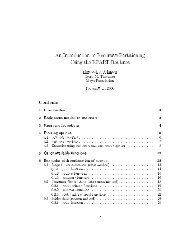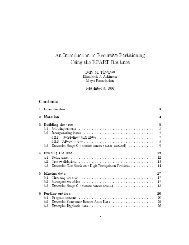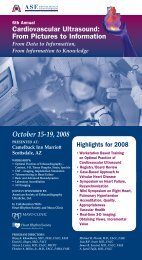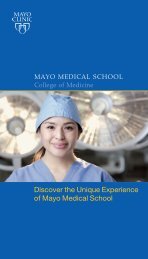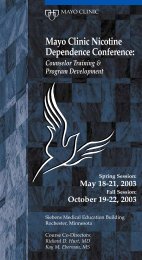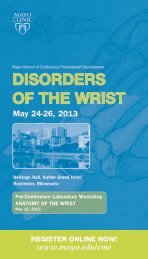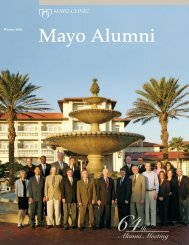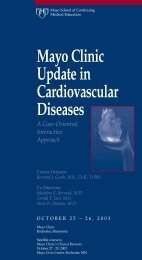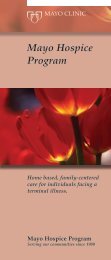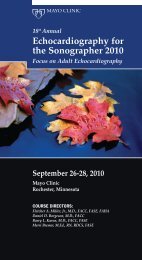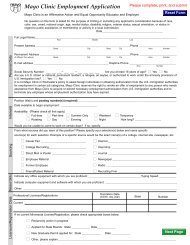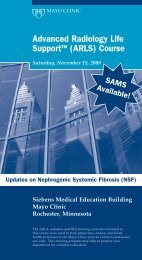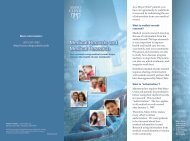Mayo Alumni Magazine 2002 Spring - MC4409-0402 - Mayo Clinic
Mayo Alumni Magazine 2002 Spring - MC4409-0402 - Mayo Clinic
Mayo Alumni Magazine 2002 Spring - MC4409-0402 - Mayo Clinic
Create successful ePaper yourself
Turn your PDF publications into a flip-book with our unique Google optimized e-Paper software.
then went on, but I won’t forget the connection we made<br />
for a brief moment.”<br />
Two <strong>Mayo</strong> <strong>Clinic</strong> patients, one from Jacksonville and<br />
one from Scottsdale, were also torch bearers as the relay<br />
made its way through those regions of the country. They<br />
were selected specifically for their battles against their<br />
diseases.<br />
“Even though we weren’t chosen as representatives of<br />
<strong>Mayo</strong> <strong>Clinic</strong> for the run, I feel like we represented <strong>Mayo</strong><br />
<strong>Clinic</strong>,” says Dr. LaRusso. “The theme of the Olympics is<br />
inspiration, and <strong>Mayo</strong> has an abundance of inspirational<br />
people.”<br />
At work in the Olympic Village<br />
Four members of the <strong>Mayo</strong> <strong>Clinic</strong> Sports Medicine<br />
Center attended the games in February to treat athletes.<br />
Michael Stuart, M.D., Edward Laskowski, M.D.,<br />
Diane Dahm, M.D., and Jay Smith, M.D., served as<br />
members of a 20-physician volunteer group at the Olympic<br />
Polyclinic in the Athlete’s Village. It was the first Olympic<br />
experience for the four physicians, Drs. Laskowski<br />
and Stuart, are co-directors of the <strong>Mayo</strong> <strong>Clinic</strong> Sports<br />
Medicine Center.<br />
Security at the Olympics was unprecedented. Each<br />
physician was given a flame red jacket and other winter<br />
gear to serve as a work uniform. Groups of volunteers<br />
were identified by the color of their outfits. Admission to<br />
the Polyclinic in the Athlete’s Village required passing<br />
through a stringent security process.<br />
Volunteers arrived at a designated parking lot to ride a<br />
bus into the Village. They were searched as they boarded<br />
the bus and the bus was searched as well. At Athlete’s<br />
Village, identification was checked again and volunteers<br />
were processed through metal detectors as their<br />
belongings were searched. Then, another credentialling<br />
step gave them a day pass for their work shift. The security<br />
process took an hour and a half to complete. As volunteers<br />
learned the routine, the process would shorten to 45<br />
minutes, the physicians said.<br />
“Overall, it ran quite smoothly. You expected the<br />
security, so that wasn’t really a problem,” says<br />
Dr. Laskowski. “We all understood why it was there and it<br />
made you feel safe. It was handled so well, you didn’t<br />
really give it a thought after you went through it the first<br />
day and understood how the routine worked.”<br />
Banners with Olympic slogans and pictures of athletes<br />
decorated the Athlete’s Village and downtown Salt Lake City.<br />
<strong>Spring</strong> <strong>2002</strong> <strong>Mayo</strong> <strong>Alumni</strong> 11



